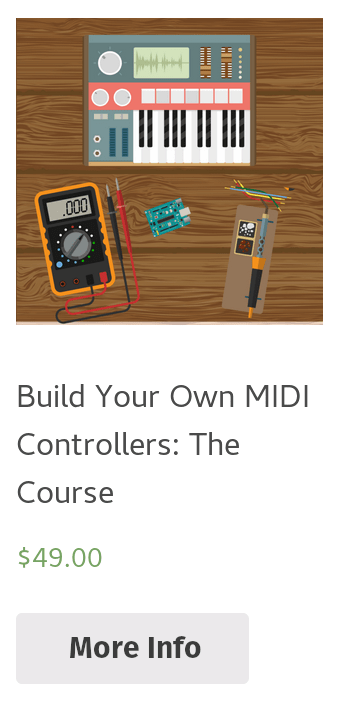[Infographic] Home Studio Acoustics: Getting The Perfect Sound
This was a guest post written by the guys at Resonics. Make sure to check out their site for more expert advice on acoustic treatment.

So you’ve got a reliable computer, a good audio interface, and you’ve purchased some good quality monitors and a microphone. You’re itching to record.
Think your mix is going to come out just as you want it to? Think again.
Apologies for the reality check, but unless you have access to a professional recording studio – your final product is not going to sound like those of your favorite artists.
This is because most home recording studios suffer from poor acoustics. Hard surfaces reflect sound in the room – causing phasing issues and adding a hollow sound to mixes. Room ‘modes’ (collection of resonances) caused by a room’s dimension create uneven frequency responses, harming the recording. A lack of soundproofing in your standard domestic room causes sound to leak in and out of your studio – polluting mixes.
These, plus a host of other issues mean that your attempts at home recording can often be humbling at best.
Make a few small considerations, however, and you can significantly improve the acoustics in your home studio – giving your mix that professional touch.
Use the infographic from Resonics, at the top of this post, as a guide to improving the acoustics in your DIY studio.
Isolation VS Accuracy
The two factors to consider with home studio acoustics are accuracy and isolation.
Accuracy is the clarity of sound reaching your ears. If you are hearing an inaccurate sound then you won’t be able to identify and resolve the problems with your mix.
Isolation refers to how well your room is soundproofed, or sealed off from the rest of the building. Without a well soundproofed room, your mix is likely to be polluted by foreign sounds.
Improve Accuracy
- Mixing and Monitor Positioning One of the simplest things you can do is to ensure that your ears are receiving a direct source of sound from your monitors.- Make sure your speakers are facing tall and not on their sides.
– Monitors should sit on their own adjustable stands and at the same height as your head in your mixing position.
– Common practice is to create an equilateral triangle using your mixing position and the monitors. The monitors should be pointed in to your face at an angle (use the diagram below as a guide). - Trap The Bass
Without a proper approach to control bass in your studio, your mixes can sound muddy and hollow.
-Treat the corners of your room, where bass accumulates. Use bass traps of at least 10” thickness. Try brands such as Owens, Auralex and Universal Acoustics. - Control High Frequency ReflectionsTo prevent a tinny sound and a lively mix – control frequencies of 500 Hz and higher using acoustic absorbers (consider making your own using the guide on Midi Lifestyle).-Place absorbers on side walls, covering the distance between your mixing position and the speakers. This will control primary reflections from your monitors.
– Consider a suspended acoustic absorber above your mixing position to negate echo created by a low ceiling.
– Add panels to your rear wall and the walls directly behind your speakers in order to control additional reflections.
– In a standard rectangular room, place your monitors along the longer walls to prevent additional side wall reflections. - Avoid Pesky Room Modes.
All small to medium sized rooms are going to suffer from uneven frequency responses caused by room ‘modes’.- Avoid ‘nulls’ that exist at halfway points in rooms by making sure your mixing position isn’t at 50% of a room’s length.
– Ensure that you are positioned midway between the side walls to the left and right of your mixing position (this helps achieve a balanced stereo image).
– Programs like Room EQ Wizard can help you find the room nodes to avoid – position your monitors and your mixing position around these trouble spots.
Soundproofing
A much harder task than controlling your internal acoustic environment is isolating your room from the rest of the building.
Unless you have the scope to build a new room within your existing room – your studio is never going to be fully soundproofed.
However, using the mass + decoupling approach, and with a bit of handywork, you can make significant strides towards soundproofing your studio.
- Seal your doors using inexpensive door seals. If you have the budget – consider a compression latch to seal the door tight against its frame.
- Install a secondary glazing kit to your windows if they aren’t already double glazed. The creation of a sealed air gap will help prevent noise attenuation.
- Add mass to your walls by building secondary walls using your standard partition plasterboard and stud walls. Separate (decouple) the new framework from the plasterboard using isolation clips. Add some standard building insulation to the void to add extra mass.
Unfortunately, home studios are never going to replicate the sound generated by professional recording studios. After all, these studios are built on time and money – and lots of it. They are also advantaged by being built from scratch, unlike DIY studios, which must make do with existing designs. So while you might never reach that ideal of a 100% perfect studio, you can get to 90% with a few small tweaks, and for your mixes, that is often good enough.
References:
- Sound On Sound: ‘Monitoring & Acoustic Treatment’
- The Recording Revolution: ‘How To Create Your Own Mixing Sweet Spot’
- Tuts+: ‘4 Foolproof Ways To Make Your Home Studio Sound Better‘
- Arqen: ‘Bass Traps 101 – Your Ultimate Guide To Bass Trap Placement’

Leave a Comment